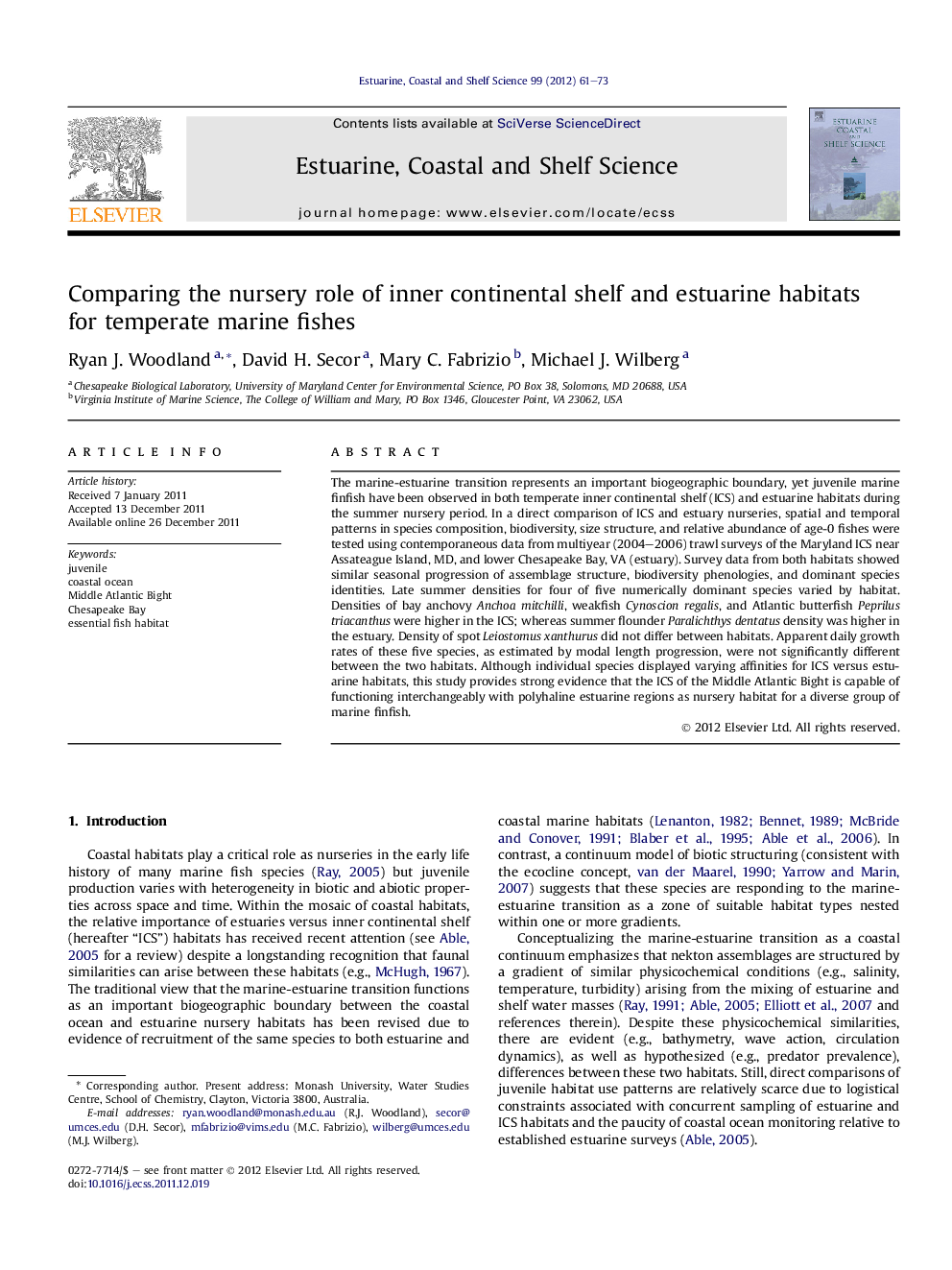| Article ID | Journal | Published Year | Pages | File Type |
|---|---|---|---|---|
| 4540373 | Estuarine, Coastal and Shelf Science | 2012 | 13 Pages |
The marine-estuarine transition represents an important biogeographic boundary, yet juvenile marine finfish have been observed in both temperate inner continental shelf (ICS) and estuarine habitats during the summer nursery period. In a direct comparison of ICS and estuary nurseries, spatial and temporal patterns in species composition, biodiversity, size structure, and relative abundance of age-0 fishes were tested using contemporaneous data from multiyear (2004–2006) trawl surveys of the Maryland ICS near Assateague Island, MD, and lower Chesapeake Bay, VA (estuary). Survey data from both habitats showed similar seasonal progression of assemblage structure, biodiversity phenologies, and dominant species identities. Late summer densities for four of five numerically dominant species varied by habitat. Densities of bay anchovy Anchoa mitchilli, weakfish Cynoscion regalis, and Atlantic butterfish Peprilus triacanthus were higher in the ICS; whereas summer flounder Paralichthys dentatus density was higher in the estuary. Density of spot Leiostomus xanthurus did not differ between habitats. Apparent daily growth rates of these five species, as estimated by modal length progression, were not significantly different between the two habitats. Although individual species displayed varying affinities for ICS versus estuarine habitats, this study provides strong evidence that the ICS of the Middle Atlantic Bight is capable of functioning interchangeably with polyhaline estuarine regions as nursery habitat for a diverse group of marine finfish.
Graphical abstractFigure optionsDownload full-size imageDownload high-quality image (227 K)Download as PowerPoint slideHighlights► Juvenile marine finfish are often observed in inner continental shelf (ICS) areas. ► ICS and estuarine assemblages showed similar composition and diversity phenologies. ► Late summer densities for four of five dominant species varied by habitat. ► Growth rates of these five species did not differ between habitats. ► The ICS is capable of functioning as nursery habitat for many marine finfish.
